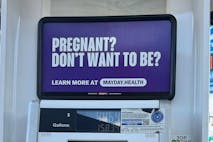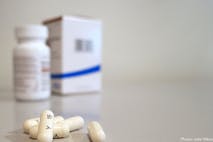
Disability rights groups file lawsuit to stop Delaware assisted suicide law
Angeline Tan
·
Former abortionist exposes this ‘dangerous’ abortion industry practice in ‘Face to Face’ series
Live Action’s new “Face to Face” series brings together former abortionists, women who have had abortions, and abortion survivors for emotional, impactful conversations on how abortion affects people. Two of the people who participated are Dr. Anthony Levatino, a former abortionist who estimates he committed nearly 1,200 abortions, and Melissa Ohden, who survived an attempted saline abortion at 31 weeks gestation.
In the video, Levatino discusses how this exact situation is even more likely to occur with the most common abortion method used today.
“I’m listening to your abortion story about your mom, who was projected to be what — 18 or 19 weeks pregnant? And she was actually 31,” Levatino said to Ohden. “This is a medical term that is not complimentary. What kind of barber doesn’t know the difference between a 19-week and a 31-week pregnancy? We did ultrasounds on every single one of our abortion patients. That was part of our evaluation to make sure we never got in that situation.”
However, Levatino is concerned this could happen more often today.
“I hear now about medical abortion or chemical abortion being done with internet websites where your contact with the patient is limited to either a video chat or text,” he continued. “You cannot adequately determine gestational age on video chat. You cannot tell if a patient may be carrying an ectopic pregnancy on a video chat. This is dangerous and this is being promoted.”

Article continues below
Dear Reader,
Have you ever wanted to share the miracle of human development with little ones? Live Action is proud to present the "Baby Olivia" board book, which presents the content of Live Action's "Baby Olivia" fetal development video in a fun, new format. It's perfect for helping little minds understand the complex and beautiful process of human development in the womb.
Receive our brand new Baby Olivia board book when you give a one-time gift of $30 or more (or begin a new monthly gift of $15 or more).
Levatino is correct; the abortion industry has been increasingly promoting the DIY, at-home, no-test protocol for chemical abortions, despite the potential risks.
Peer-reviewed studies have found risks of severe side effects after chemical abortions, including hemorrhage, sepsis, and death. The abortion pill regimen is reportedly four times more dangerous than first-trimester surgical abortions, and the FDA’s 2023 mifepristone label showed that a range of 2.9 to 4.6 percent of women report to the ER for complications after taking the abortion pill regimen. Another study showed that 6% of women who participated had abortion pill complications severe enough to visit either an urgent care center or a hospital emergency room.
Furthermore, mifepristone — the first drug in the two-drug abortion pill regimen — has a black box warning about various potential side effects, including sepsis.

And, as Levatino pointed out, prescribers cannot rule out contraindications like ectopic pregnancy or advanced gestation without an ultrasound. Ectopic pregnancy is a life-threatening complication.
In addition to these safety issues, prescribing the abortion pill without any in-person visit puts women at higher risk for coercion. Altogether, the promotion of a no-test abortion pill protocol benefits the abortion industry because it increases abortion access; it does not benefit the woman’s safety, and put them at greater risk.
Live Action News is pro-life news and commentary from a pro-life perspective.
Contact editor@liveaction.org for questions, corrections, or if you are seeking permission to reprint any Live Action News content.
Guest Articles: To submit a guest article to Live Action News, email editor@liveaction.org with an attached Word document of 800-1000 words. Please also attach any photos relevant to your submission if applicable. If your submission is accepted for publication, you will be notified within three weeks. Guest articles are not compensated (see our Open License Agreement). Thank you for your interest in Live Action News!

Angeline Tan
·
Abortion Pill
Bridget Sielicki
·
Abortion Pill
Carole Novielli
·
Abortion Pill
Bridget Sielicki
·
Abortion Pill
Bridget Sielicki
·
Abortion Pill
Nancy Flanders
·
Analysis
Cassy Cooke
·
International
Cassy Cooke
·
International
Cassy Cooke
·
Politics
Cassy Cooke
·
Pop Culture
Cassy Cooke
·